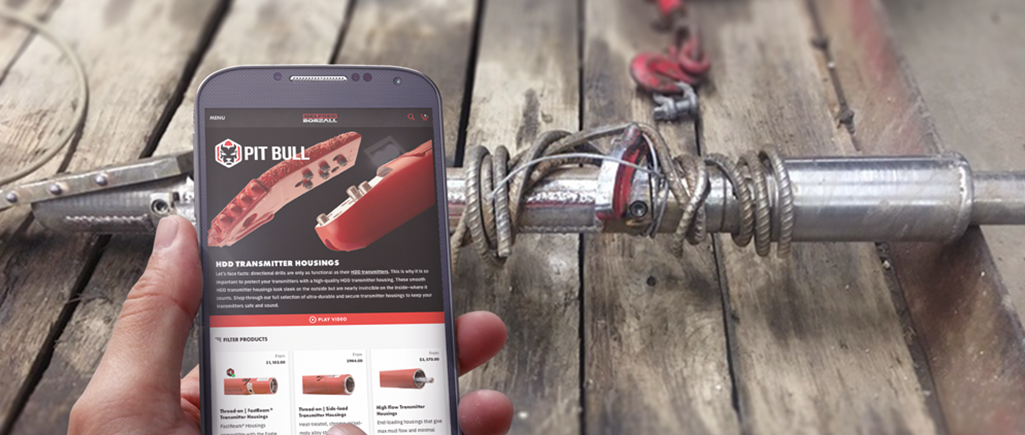
A quality transmitter housing is one of the must-have HDD tools in your operation. Though your transmitter is built with durability in mind, it’s still one of the most fragile parts of your drill string. Break it or damage it and you’re forced to stop drilling. Not to mention the fact that a replacement can cost thousands of dollars. Even though directional drill products are designed to perform under constant stress, they require frequent checks and maintenance. 
Here’s what you need to know to make sure your transmitter housing is doing its job.
Know your transmitter housing
There are two common transmitter housing designs, each with unique features.
-
Side-load transmitter housings: The most common type of housing, the side-load transmitter housing, features a removable cover plate that is secured in place with bolts. Side-load housings make it easy to get to your transmitter. Just unscrew the bolts, remove the cover plate, insert your transmitter from the side, then re-bolt the cover plate back in place.
-
End-load transmitter housings: End-load transmitter housings are cylindrical tubes sealed with removable plugs at both ends. To replace your transmitter, take a plug off one end, drop in your transmitter then put your end-piece adapter back on. Your transmitter is now sealed up safely in the tube. This type of housing is typically stronger than a side-load because the opening for the transmitter has not been machined out. Many end-load transmitters are universal, in that a single housing is compatible with most guidance systems. End-load housings also typically allow more drill fluid to flow through without restriction, making them ideal for use with mud motors.
Secure the lid
No matter what type of housing you use, be sure to take the time to properly secure the lid before you begin drilling. The HDD tools in your drill string spin at around 300rpm. This level of force can easily loosen connections that aren’t secured tightly and end up compromising your transmitter. Sand and dirt build-up in the bottom of the bolt holes might make it feel like your cover plate or end plugs are tightened down, even if they aren’t. If not shouldered up properly, bolts become more susceptible to vibrating loose.
Clean your fluid ports
When you stop drilling, fluids and sand can build up in your fluid ports. When this mixture dries, it basically becomes a form of concrete, making it much harder to extract once solidified. By cleaning your ports with a pressure washer after each use, you ensure that your fluid ports remain free from debris and blockage.
Beware of over-wear
Check the wear on your transmitter housing regularly. Housings that look fine might have actually lost a significant amount of diameter, resulting in a weakened housing. If your housing flexes when you push on it, that’s a sign that it needs replacing. Be sure to keep an eye on wear spots. You’ll see most obvious signs of wear on the bottom of the housing and also and toward the back. It might look like your housing has bent, but what you’re actually seeing is wear on a specific area. As a general rule, once the diameter of the housing has dropped 25%, it’s time to get a new one. Don’t try to weld on additional hardfacing yourself in an attempt to get more life out of your housing (or any of your HDD tools). Doing so without the proper speed and technique can result in overheating the steel alloy, potentially causing stress cracks. Areas that have already been machined are particularly susceptible. Hardfacing can be welded onto housings, but it should only be done by professionals who manufacture directional drill products. HDD tooling manufacturers are often a smarter choice than OEMs because of their ability to apply the material quickly using a robotic welder and their expertise in tool design–they know where to place hardfacing and where not to. 
If a transmitter housing is welded on without the proper technique, it could induce stress fractures resulting in cracks.
Your transmitter housing isn’t the sexiest tool in your drill string, but it’s well worth the cost. Damage to your transmitter can stop your job in its tracks, so it just makes sense to provide it with the most protection possible. If you’re not sure which transmitter housing is right for you, call your Melfred Borzall distributor or start a chat with us online and we’ll help you sort out the smartest solution.


